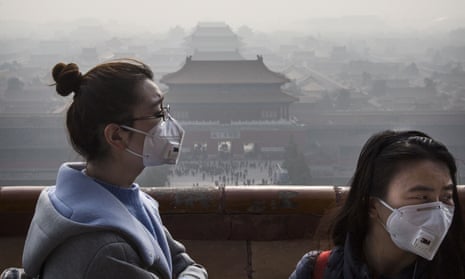Beijing’s residents have been advised to stay indoors after air pollution in the Chinese capital reached hazardous levels.
The warning comes as the governments of more than 190 nations gather in Paris to discuss a possible new global agreement on climate change.
China, the biggest emitter of greenhouse gases in the world, is suffering from serious air pollution, largely attributed to smog from coal-fired power plants.
The onset of winter and the need for more heating of homes means the problem has intensified in the capital, which has an estimated population of 20 million.
At noon on Saturday, the US embassy in Beijing reported the level of the poisonous, tiny articles of PM2.5 at 391 micrograms per cubic metre.
The World Health Organisation considers the safe level to be 25 micrograms per cubic metre of the particulates.
Since Friday, the city had been shroud in grey smog, reducing visibilities to a few hundred metres.
The ministry of environmental protection has forecast severe pollution for the greater Beijing region, as well as the west part of Shandong and the northern part of Henan until Tuesday, when strong winds from the north are expected to blow away air pollutants.
The ministry has advised the public to stay indoors.
Residents of Beijing posted photographs of the pollution on Twitter.
Authorities blame coal burning for winter heating as a major culprit for the air pollution. The ministry said it had sent teams to check on illegal emissions by factories in several northern Chinese cities.
In the past, authorities have shut down factories and pulled half of the vehicles off the roads to curb pollution. But such drastic measures are disruptive and only used when Beijing feels it needs to present a better image to the world, such as hosting major global leaders and events.
Earlier this month, air pollution reached almost 50 times above the recommended levels in Shenyang, in the country’s north-east.
On 9 November, levels of PM2.5 reached 1,157 micrograms per cubic metre in the city, reducing visibility to as little as 100 metres.
Officials said the dangerous smog was caused by a surge in coal-fired electricity use, as the region’s central heating systems kick into gear for winter.

Comments (…)
Sign in or create your Guardian account to join the discussion